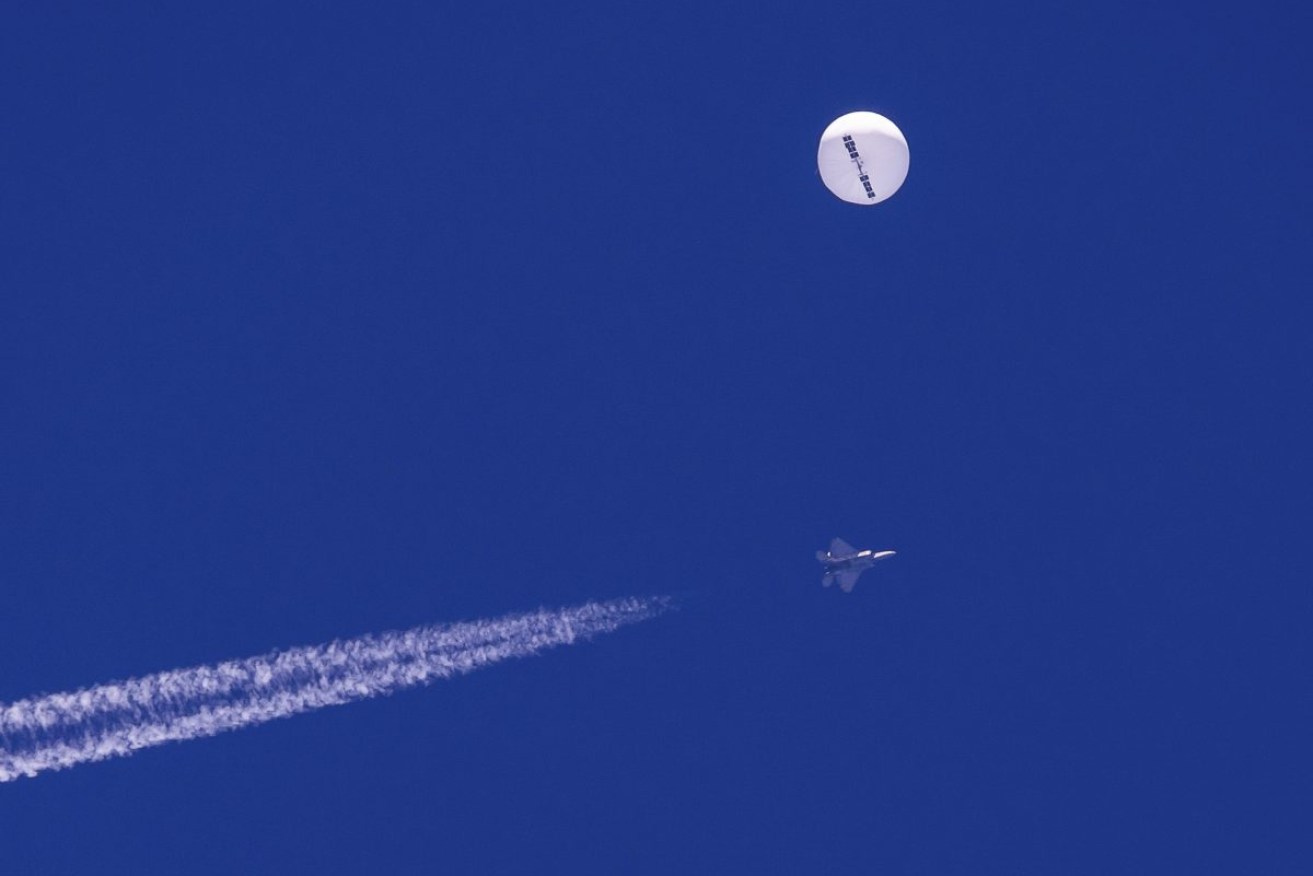US shoots down fourth ‘flying object’
The Pentagon says US fighter jets have shot down an octagonal object over Lake Huron, the fourth such incident since a suspected Chinese surveillance balloon put North American security forces on high alert earlier this month.

A Chinese balloon in US airspace before being shot down on February 5. Other unidentified objects have since been shot down, including over Canada. Photo: Chad Fish via AP
On President Joe Biden’s order, a US F-16 fighter shot down the object at 2:42 pm local time over Lake Huron on the US-Canada border, Pentagon spokesperson Patrick Ryder said in an official statement.
Though it did not pose a military threat, the object could have potentially interfered with domestic air traffic as it was travelling at 20,000 feet (6100m), and it might have had surveillance activities, the Pentagon said.
The object appeared to be octagonal in structure, with strings hanging off but no discernible payload, said a US official speaking on condition of anonymity.
The object was recently detected over Montana near sensitive military sites, prompting the closure of US airspace, the Pentagon said.
The incident raised questions about the spate of unusual objects that have appeared over North American skies in recent weeks and raised tensions with China.
“We need the facts about where they are originating from, what their purpose is, and why their frequency is increasing,” said US Representative Debbie Dingell, one of several Michigan politicians who applauded the military for downing the object.
US officials identified the first object as a Chinese surveillance balloon and shot it down off the coast of South Carolina on February 4.
On Friday, a second object was shot down over sea ice near Deadhorse, Alaska. A third object was destroyed over Canada’s Yukon on Saturday with investigators still hunting for the wreckage.
“Recovery teams are on the ground, looking to find and analyse the object,” Prime Minister Justin Trudeau told reporters on Sunday.
“The security of citizens is our top priority and that’s why I made the decision to have that unidentified object shot down,” he said, adding that it had posed a danger to civilian aircraft.
North America has been on high alert for aerial intrusions following the appearance of a white, eye-catching Chinese airship over American skies earlier this month.
That 60-metre-high balloon – which Americans have accused Beijing of using to spy on the United States – caused an international incident, leading Secretary of State Antony Blinken to call off a planned trip to China only hours before he was set to depart.
Surveillance fears appear to have US officials on high alert.
Twice in 24 hours, US officials closed airspace – only to reopen it swiftly.
On Sunday, the Federal Aviation Administration briefly closed space above Lake Michigan. On Saturday, the US military scrambled fighter jets in Montana to investigate a radar anomaly there.
China denies the first balloon was being used for surveillance and says it was a civilian research craft. It condemned the United States for shooting it down off the coast of South Carolina last Saturday.
US Senate Majority Leader Chuck Schumer told US broadcaster ABC that officials think two of the latest objects were smaller balloons than the original one.
The White House said only that the recently downed objects “did not closely resemble” the Chinese balloon, echoing Schumer’s description of them as “much smaller”.
Canadian counterparts trying to piece together what was shot down over the Yukon may have their own challenges.
The territory is a sparsely populated region in Canada’s far northwest, which borders Alaska. It can be brutally cold in the winter, but temperatures are unusually mild for this time of year, which could ease the recovery effort.
-with AAP




